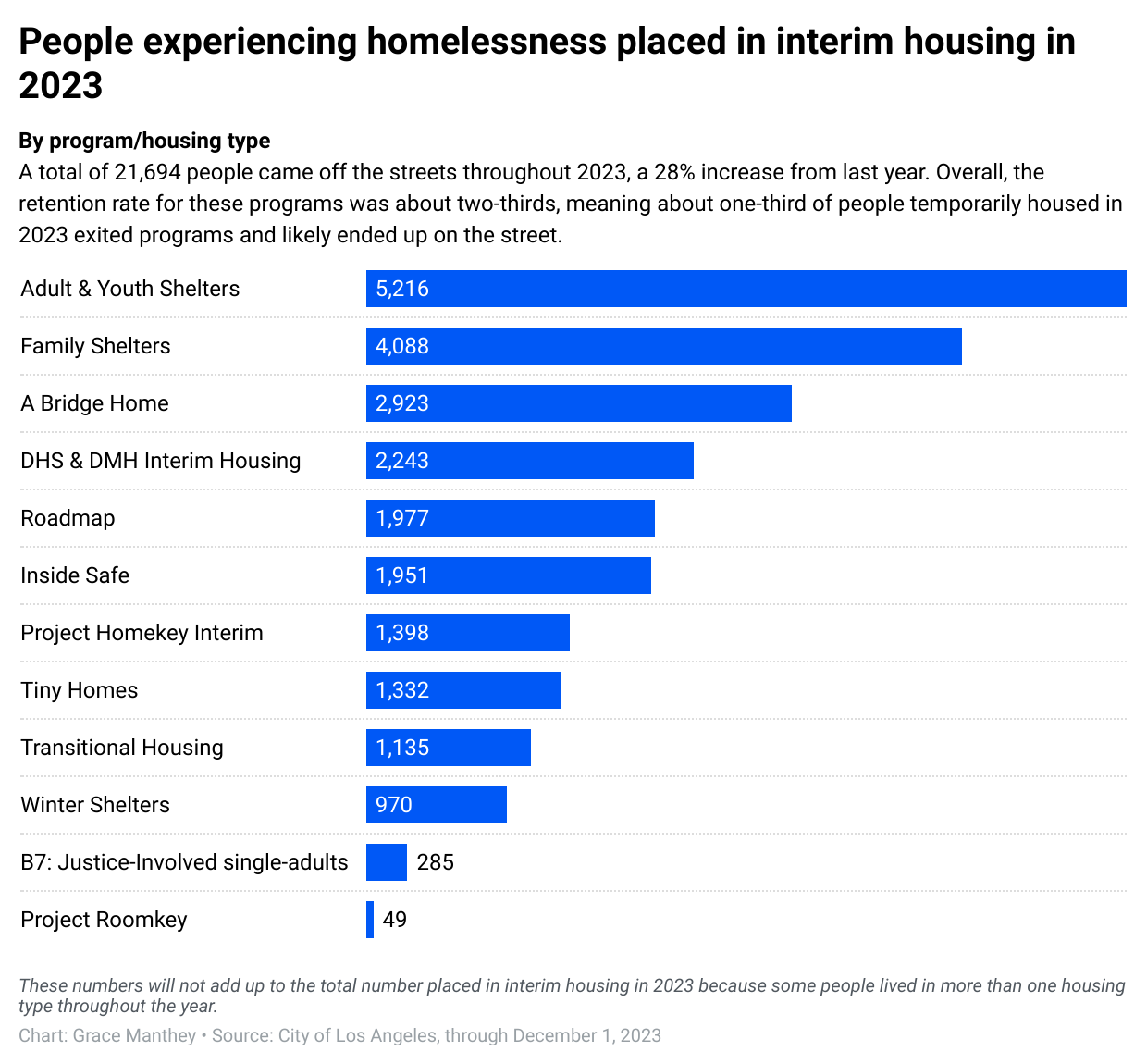The 21,694 people housed throughout Bass' first year, through December 1, was 28% higher than the nearly 17,000 housed throughout 2022.
[Ads /]
Nearly 2,000 of those people came inside through the Mayor's Inside Safe program, a citywide housing-focused strategy to bring people inside through 32 encampment operations.
The remaining were housed through other means, such as tiny homes, Project Homekey, A Bridge Home, shelters and traditional housing.
The most came inside through adult and family shelters, at about 5,000, and family shelters at about 4,000.

But not everyone stays in interim housing. The city's estimates show that about two-thirds of people who were placed in interim housing stayed, while one-third did not.
[Ads /]
Inside Safe's retention rate was higher than that of the other interim housing options combined: 81% have stayed in the housing provided by Inside Safe, leaving roughly 370 exiting the program. A few hundred people ended up in permanent housing through Inside Safe.
The Inside Safe program represents only a small portion of all the temporary housing options. About 64% of all other people placed in interim housing stayed, meaning 36%, more than 7,000 people, were likely back on the street.
But city and county officials admitted that they often don't know what happens to people when they exit temporary housing, and said they are working to improve data systems to better track it.
"We really should know what happens when they leave," said Mayor Karen Bass at Wednesday's homeless data briefing.
Los Angeles Homeless Services Authority CEO, Dr. Va Lecia Adams Kellum, also acknowledged that when she took over earlier this year, "we weren't a data-driven system."
[Ads /]
An audit by the Los Angeles City Controller released Tuesday found data quality issues in LAHSA's systems.
"These data quality issues make it next to impossible for the City to have an accurate picture of how many beds we actually have available, and how many are being utilized in the City at any given time," the audit read.
Adams Kellum said LAHSA is trying to address these systems and improve data collection that currently keeps them from working effectively.
Officials also don't know how many people have fallen into homelessness since the last homeless count, and Bass said she is "worried about the in-flow," of homelessness especially as COVID-era rent protections end and more Angelenos face eviction.
Bass said there is not a system yet to help people from falling into homelessness and that service providers are way beyond capacity. She said she plans to expand services in her second year.

